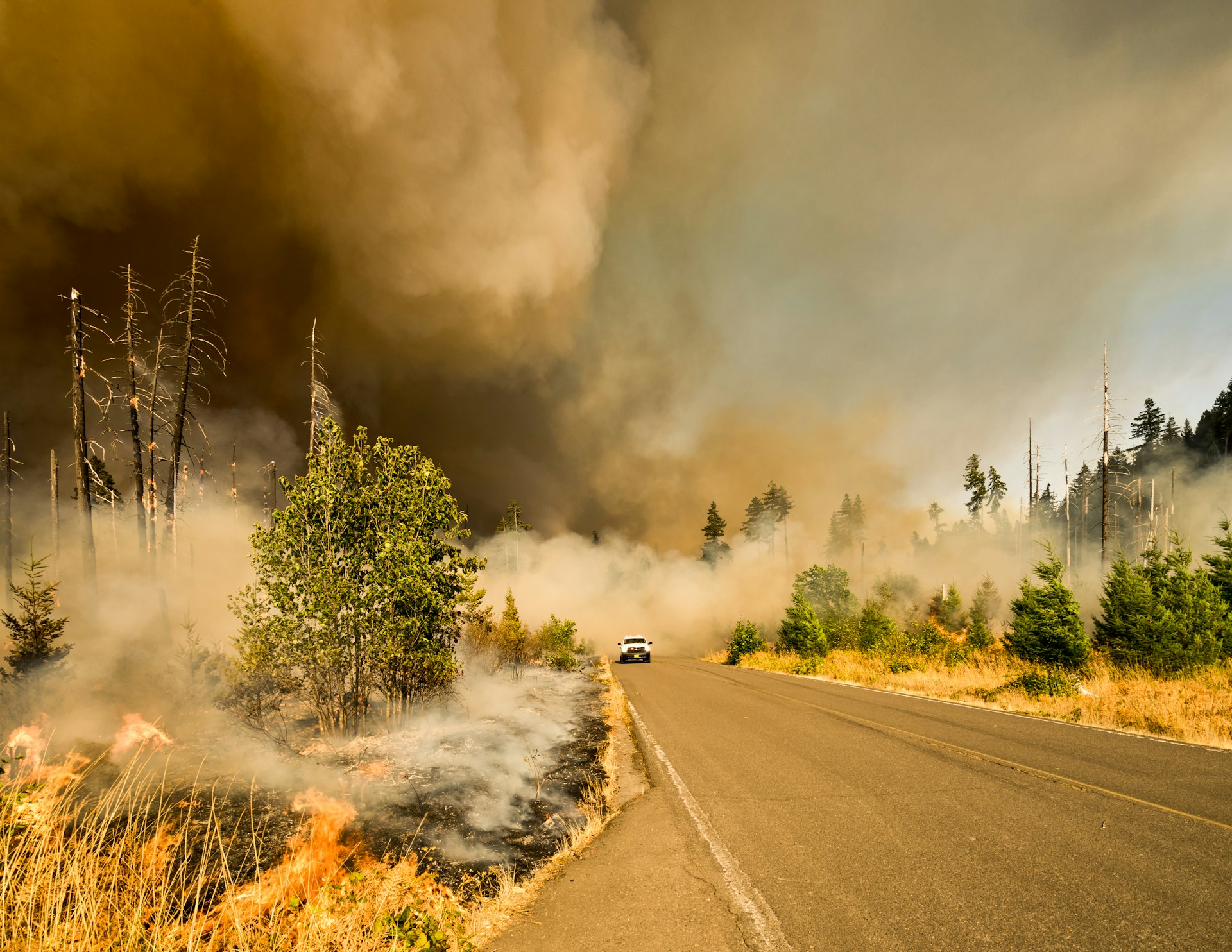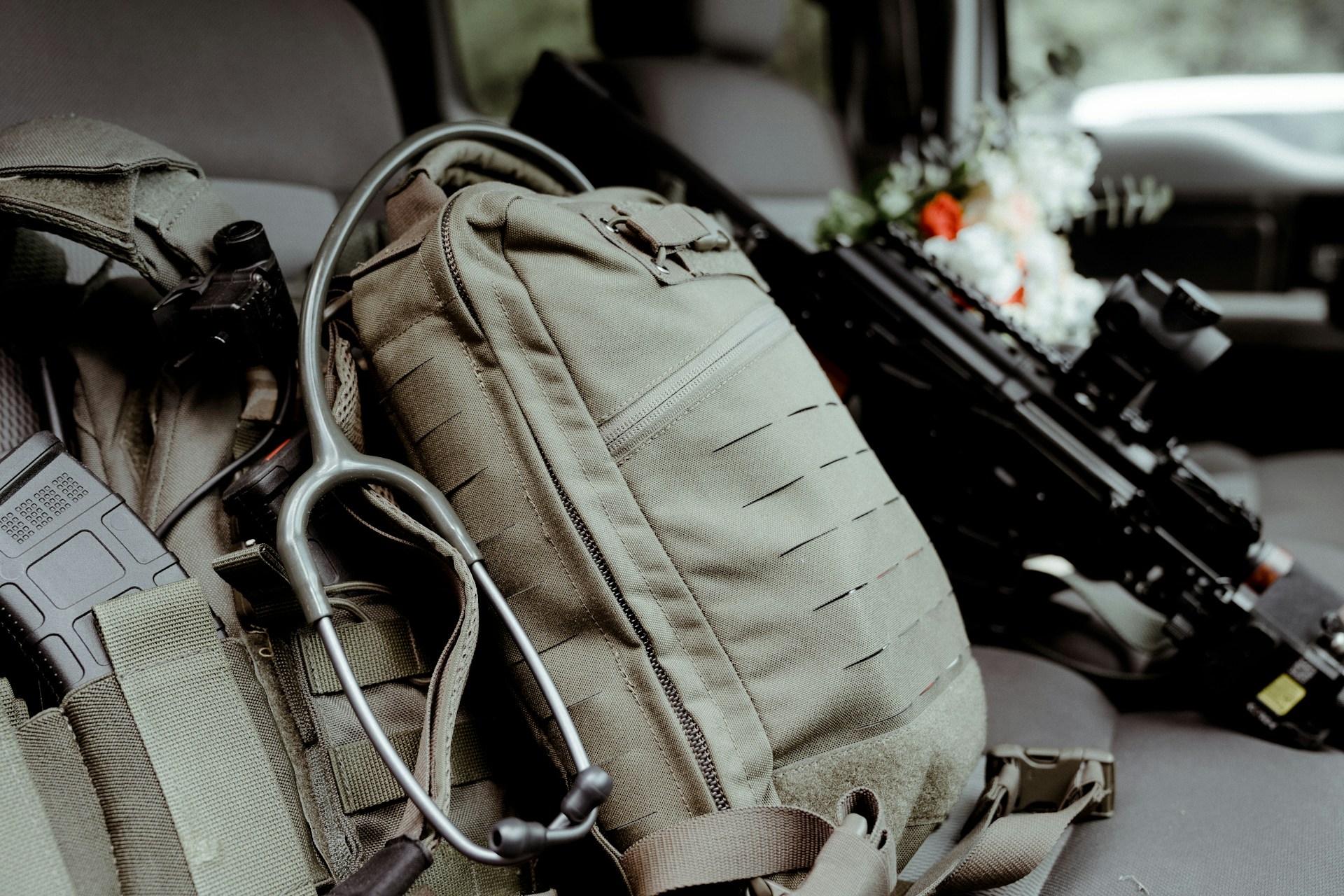Preparedness
Master Wildfire Defense With These Home-Saving Strategies

In the face of increasing wildfire threats, safeguarding your home is more crucial than ever. Wildfires, with their unpredictable nature, can devastate properties in mere moments. However, understanding how fires ignite homes and taking strategic measures can significantly enhance your property’s resilience.
Research highlights that embers and small flames are the primary culprits in home ignitions during wildfires. These embers, essentially burning fragments of wood or vegetation, can be carried by the wind for over a mile, sparking spot fires and igniting structures. Creating a wildfire-defensible zone is a proactive way to protect your home from these threats.
Two critical factors determine a home’s ability to withstand a wildfire: the quality of defensible space around it and its structural ignitability. Together, they form the Home Ignition Zone (HIZ), which encompasses the structure and its immediate surroundings. The goal is to minimize or eliminate fuels and ignition sources within this zone.
Defensible space is a modified area around a structure designed to reduce fire hazards. By treating, clearing, or reducing natural and manmade fuels, you can slow the spread of wildfire. This approach not only protects your home but also prevents a structure fire from spreading to neighboring properties or forests.
Developing effective defensible space involves creating management zones around each building on your property, including garages, barns, and other structures. The design of these zones depends on factors such as the size and type of vegetation present.
The first zone, extending from the home to five feet out, is critical. It is considered a non-combustible area, highly vulnerable to embers. Immediate actions in this zone include:
“Clean roofs and gutters of dead leaves, debris and pine needles that could catch embers.”
“Replace or repair any loose or missing shingles or roof tiles to prevent ember penetration.”
“Reduce embers that could pass through vents in the eaves by installing 1/8 inch metal mesh screening.”
The next zone, spanning five to thirty feet from the home, focuses on landscaping and hardscaping to influence fire behavior. Key strategies include:
“Keep lawns and native grasses mowed to a height of four inches.”
“Remove ladder fuels (vegetation under trees) so a surface fire cannot reach the crowns.”
Finally, the outer zone, extending thirty to one hundred feet (up to two hundred feet), aims to interrupt a fire’s path and keep flames low. Recommendations include:
“Remove vegetation adjacent to storage sheds or other outbuildings within this area.”
“Trees 30 to 60 feet from the home should have at least 12 feet between canopy tops.”
Incorporating goats into your fire mitigation strategy can be particularly effective in challenging terrains. Goats, unlike sheep, are browsers and will naturally prune brush and low tree branches. This behavior aligns with recommended fire prevention practices. A study from the University of Massachusetts Amherst found that alien grasses, which goats tend to consume, can significantly increase wildfire frequency.
“If you throw a bunch of matches into a forest, some small percentage of them might actually start a fire,” explains Bethany Bradley, professor of environmental conservation at UMass Amherst. “But if you throw a bunch of matches into a big hay pile, there’s a good chance that many of those will catch fire.”
To further bolster your home’s fire resistance, consult state and local fire professionals. They can assess your property’s vulnerability and recommend improvements. For new constructions, consider using fire-resistant materials for roofing and siding. A simple metal roof without dormers is ideal, as it sheds embers effectively.
In conclusion, while wildfires pose a significant threat, taking informed and proactive steps can drastically improve your home’s chances of survival. By understanding the dynamics of fire and implementing these strategies, you can protect your property and contribute to a safer community.
Let us know what you think, please share your thoughts in the comments below.

Preparedness
Discover the Unexpected Joys of Being a Prepper

Reflecting on recent years, it’s clear that being a prepper has offered me a sense of gratitude and peace of mind that many may not experience. The world has faced its fair share of challenges, with disasters—both natural and man-made—making headlines frequently. The rush to stock up on essentials during lockdowns highlighted the importance of being prepared. People scrambled for items like hand sanitizer and toilet paper, leading to a surge in demand for preparedness companies.
This situation underscored a significant advantage of being a prepper: peace of mind. When chaos ensues, knowing that your family is secure and you don’t have to join the frantic crowds is invaluable. Being a prepper means embracing self-reliance in all aspects of life. There’s a unique empowerment in knowing that your family possesses basic survival skills, whether it’s changing a tire, finding water, or starting a fire.
Moreover, preppers have the opportunity to assist others. In a blackout, you might be the only one with a flashlight, or the person with the necessary multi-tool to fix something. Your first aid skills could save a life, and your situational awareness might help avoid danger.
Self-reliance also reduces anxiety and enhances problem-solving skills. While many are familiar with the ‘fight or flight’ response, there’s a third: “Fight, Flight, or Freeze.” Unfortunately, anxiety can cause some to freeze. However, practicing basic skills makes it less likely for preppers to freeze, or if they do, it’s only momentarily.
Living a prepared lifestyle means being less of a burden during crises. If more people were ready for even short durations, there would be fewer store shortages and fewer people needing rescue, allowing faster aid to those truly in need.
Additionally, prepping aligns with environmental consciousness. While I don’t consider myself an environmentalist, I do value a healthy ecosystem. I want clean rivers and lakes for fishing, uncontaminated well water, and a thriving wilderness.
Regardless of when you began your prepping journey, every skill learned and item stored contributes to better preparedness for the future. It’s a lifestyle choice that offers much to be thankful for.
Let us know what you think, please share your thoughts in the comments below.
Preparedness
Ignite the Impossible: Fire-Making Secrets for Rainy Adventures

Mastering the art of fire-making is essential for any outdoor enthusiast, but doing so in the rain requires an elevated skill set. Whether you’re an avid camper or hiker, knowing how to ignite a fire in wet conditions can be crucial. In dire situations, a fire can mean the difference between life and death, offering warmth and the ability to cook food.
The first step in starting a fire in the rain is to gather tinder. Pine needles are an excellent choice because they dry quickly. Alternatively, you can use tree bark, as it often has a dry side. It’s wise to carry your own firestarter for emergencies, but if you find yourself without one, these natural options can be lifesavers.
Next, seek out kindling and fuel wood. Search for dry wood in areas with natural cover, such as beneath a leaning rock, a fallen tree, or the lower branches of an evergreen. To ensure the wood is dry enough, test the kindling by snapping it; it should break easily. For larger branches, split them with a knife to access the dry wood inside.
Once your materials are collected, choose a location for your fire. Underneath a large tree is a good option, or you can create a makeshift shelter by stringing a tarp between trees. This will help shield your fire from the rain.
Creating a bed for your fire is essential to keep it off the wet ground. You can use tree bark or construct a bed from branches. This separation is crucial to prevent moisture from extinguishing your fire.
In wet weather, avoid digging a fire pit, as it can fill with water. Instead, build your fire on a slight mound of earth. This elevation prevents water from pooling and dousing your flames.
“Note that cutting bark from a tree should in fact only be done in an actual emergency, as this can damage and even kill the tree.” This is a vital consideration for anyone practicing survival skills in the wild.
By following these steps, you’ll be better prepared to start a fire in challenging conditions. Remember, preparedness isn’t just a hobby; it’s a way of life.
Let us know what you think, please share your thoughts in the comments below.
Preparedness
Beat the Heat Naturally: Old-School Cool Tips

As temperatures rise during the hottest months, staying comfortable without relying on air conditioning can seem daunting. However, there are several effective strategies to keep cool that have been used long before air conditioning became commonplace.
One of the simplest methods is to air out your home during the cooler evening hours. “In the evening as soon as the outside temperatures have dipped below the temp in the house open up the windows and doors and let the house air out.” If safety allows, consider leaving them open throughout the night to maximize airflow.
When morning comes, it’s crucial to close up the house to trap the cool air inside. Shut all windows and doors and draw the blinds. Incorporating blackout or heat-reflecting curtains can significantly help maintain a cooler indoor environment. Additionally, keeping interior doors to the hottest rooms closed can prevent heat from spreading.
Limiting how often you open doors during the day can also help maintain the cool air within your home. If you need to go in and out, try to use doors on the shady side of the house. This simple step can make a noticeable difference in preserving a cooler atmosphere indoors.
These tips not only help you stay comfortable during the sweltering summer months but also promote a more energy-efficient lifestyle. Whether you’re new to the concept of preparedness or an experienced prepper, these strategies can enhance your ability to manage in extreme weather conditions without relying on modern technology.
Let us know what you think, please share your thoughts in the comments below.
-

 Tactical1 year ago
Tactical1 year ago70-Year-Old Fends Off Intruder with Lead-Powered Message
-

 Tactical1 year ago
Tactical1 year agoVape Shop Employee Confronts Armed Crooks, Sends Them Running
-

 Preparedness11 months ago
Preparedness11 months agoEx-Ballerina’s Guilty Verdict Sends Tremors Through Gun-Owner Community
-

 Preparedness9 months ago
Preparedness9 months agoGood Samaritan Saves Trooper in Harrowing Interstate Confrontation
-

 Tactical1 year ago
Tactical1 year agoMidnight SUV Theft Interrupted by Armed Homeowner’s Retaliation
-

 Survival Stories2 years ago
Survival Stories2 years agoEmily’s 30-Day Experience of Being Stranded on a Desert Island
-

 Preparedness10 months ago
Preparedness10 months agoArizona Engineer’s Headless Body Found in Desert: Friend Charged
-

 Preparedness10 months ago
Preparedness10 months agoBoy Saves Dad from Bear Attack with One Perfect Shot